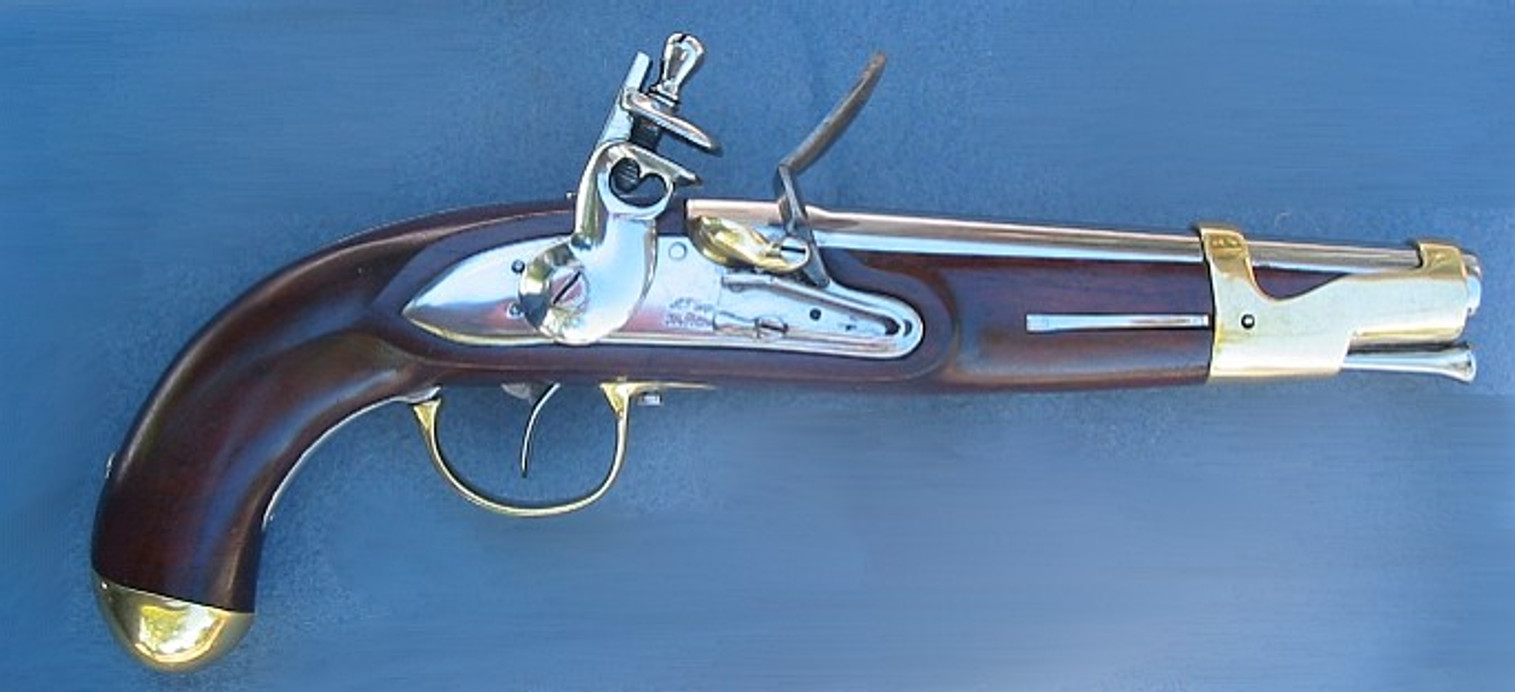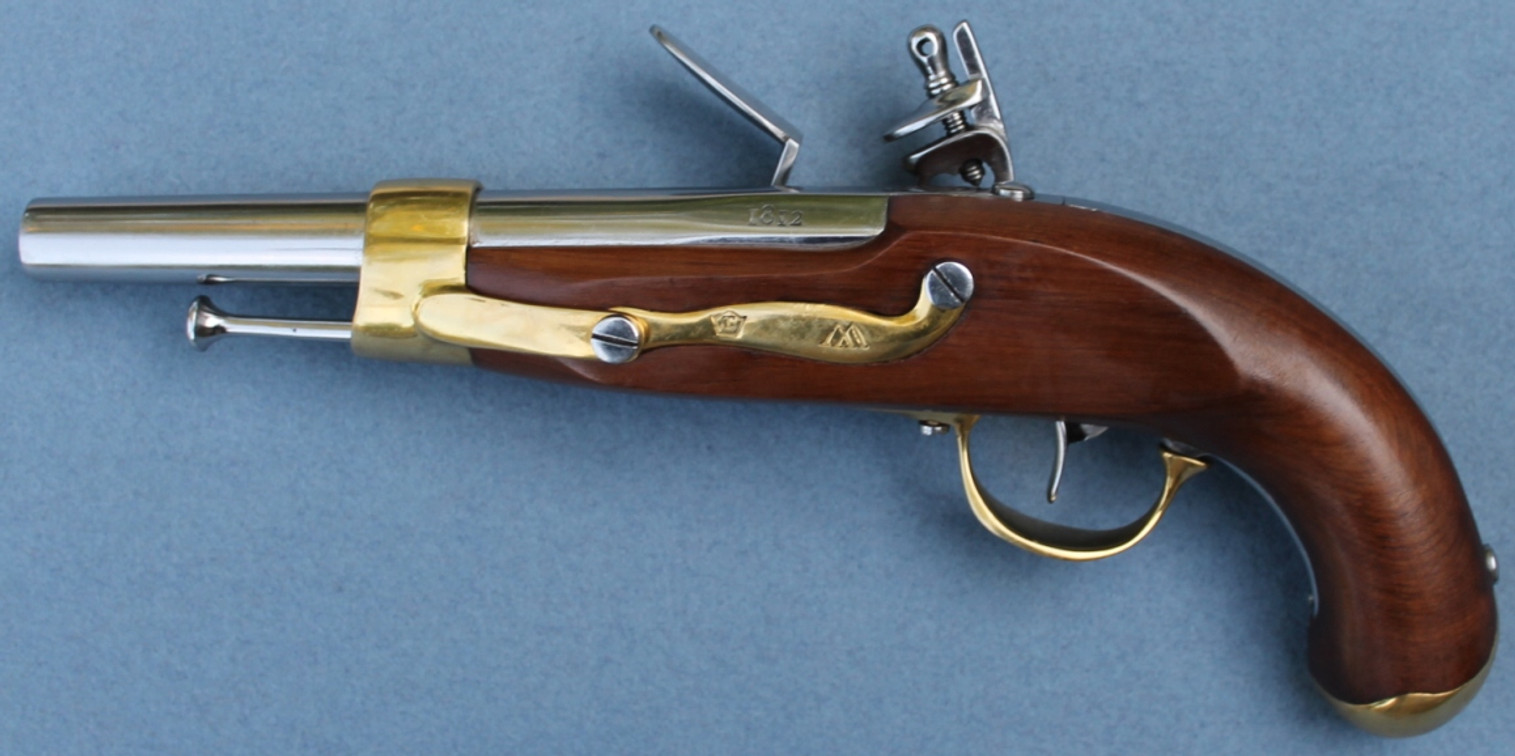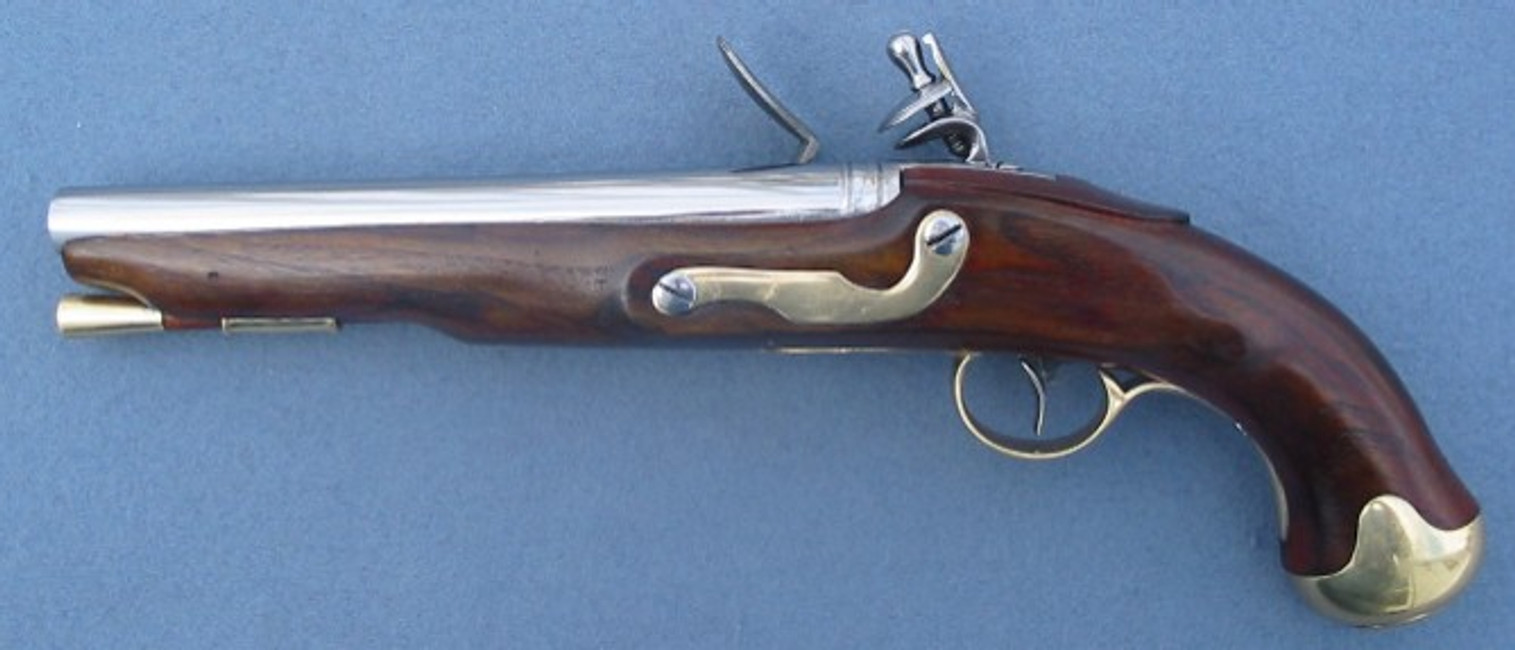In 1763 French firearms experienced a modernization under the direction of the Duc de Choiseul and a new cavalry pistol was introduced. Three years later the pattern was reduced in length and the lock was altered slightly. The French royal armouries put the 1766 model changes into mass production in 1769, including the armoury at Mutzig. The reproduction above is marked for that armoury. This pistol would have been part of the pistol purchases made by Benjamin Franklin in 1777 for Washington's Army. As well, French cavalry serving in the American Revolution were issued with them and a number ended up in the French Navy. It is uncertain if the American navy received any in the War of Independence. Interestingly enough, this model is similar to the U.S.1811 Model Navy pistol manufactured by Simeon North before the War of 1812. This French pistol was often equipped with a steel belt hook, which was convenient for naval service as well as in pinch while fighting on horse.
However its greatest use came with the French Revolutionary Wars when Europe was thrown into almost endless conflict. This brought raise to Napoleon and his campaigns in Italy (Marengo) and Egypt. While a new model of cavalry pistol had been introduced in 1777, it proved unpopular. French revolutionary armouries turned back to the 1766 model. Shortages of brass at some armouries forced them to mount a steel band and hardware on their pistols opposed to brass. Still the majority of pistols manufactured remained with brass hardware.
This reproduction 9 inch octagonal-to-round barrel has a surprising .71 calibre barrel which must have given the rider quite a jolt when it was fired. The highly-polished steel used in the barrel is made of tempered seamless modern steel (type:BS970 no.080M40) with a tight breech plug. This pieces historical significance in the American Revolution should make it popular with collectors.
The lock is made with strong durable springs and has a case-hardened frizzen (hammer) that throws good sparks. We use a industrial case-hardening factory process that makes sparking both more reliable and longer lasting. Presently no other musket provider uses this technique.
 Sales@herooutdoors.com
Sales@herooutdoors.com
 USD
USD









